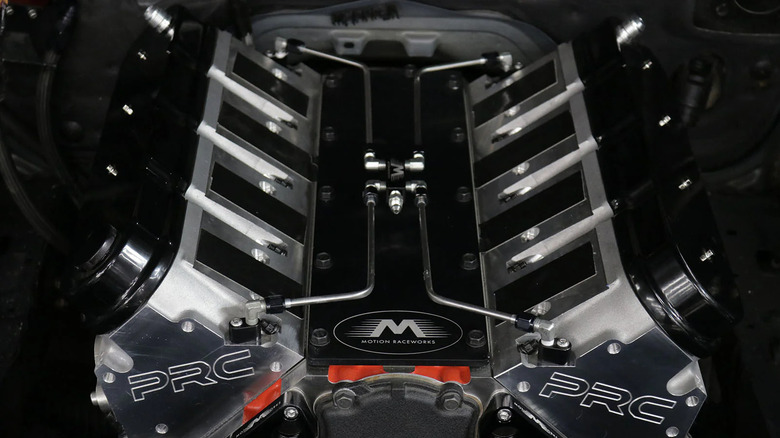What Are The Steam Tubes In LS Engines Actually For?
Chevrolet's most iconic vehicles ever made include industry legends like the Corvette, Camaro, and Bel Air. The famous bowtie logo has been around for over a century, and Chevy's LS series of V8 engines has a long-standing reputation for reliability, power, and efficiency.
The most powerful LS engines ever built include the 638-horsepower LS9 that was used for a few years in the Corvette ZR1; it's one of the LS engines that have steam tubes as a way to clear trapped air from the cooling system. Air pockets in coolant passages prevent proper thermal regulation throughout an engine; this will eventually cause serious damage and engine failure. Steam tubes carry the coolant mixture to the top of the engine where air bubbles can exit the fluid; they became a necessity when Chevy carried over the reverse cooling system from the LT1 to the LS1. In previous Chevy engines like the wildly popular 350 cubic inch small-block V8, the thermostat housing was positioned near the top of the engine and took on hot coolant coming from the cylinder heads.
With the LT and LS series, Chevy's engineers used a reverse cooling system with the thermostat in the water pump housing near the bottom of the block. This put it below the coolant passages and in a system where cooled fluid from the radiator went first to the cylinder heads before being pumped back around. Air bubbles could form in the passages, meaning parts of the engine weren't able to shed heat. The steam tubes help clear pockets of air and steam from the cooling system via the water pump or a fitting just below the radiator cap, essentially using the laws of thermodynamics to burp the lines as you drive.
LS engine steam tubes are mounted in the heads underneath the valley pan
Potential complications of engine hot spots include detonation, pre-ignition, and catastrophic overheating. Bleeder valves and jiggle pins usually help thermostats release steam and air, but in LS engines with low-mounted thermostats that hot air has nowhere to go. Since hot air will seek the highest point it can reach, Chevy engineers installed steam tubes atop the cylinder heads to allow air and steam to escape the cooling system. You can get to the tubes by removing the valley pan from your engine; if you're not confident that you can seal it back up correctly, take it to a shop if you suspect a problem with your steam tubes.
Earlier versions of the LS1 had two steam tubes at the front of the engine and two more in back, but later ones only got the two in front. If you're planning an LS swap you should know if, why, and where they are on your donor engine. If the steam tube setup on your LS engine is damaged or incomplete, you can get the Evil Energy crossover vent tube kit from Amazon for $109.99. It fits 5.3 or 6.0-liter LS1 through LSX engines, but check with the manufacturer to make sure it will work with your particular Chevy.

